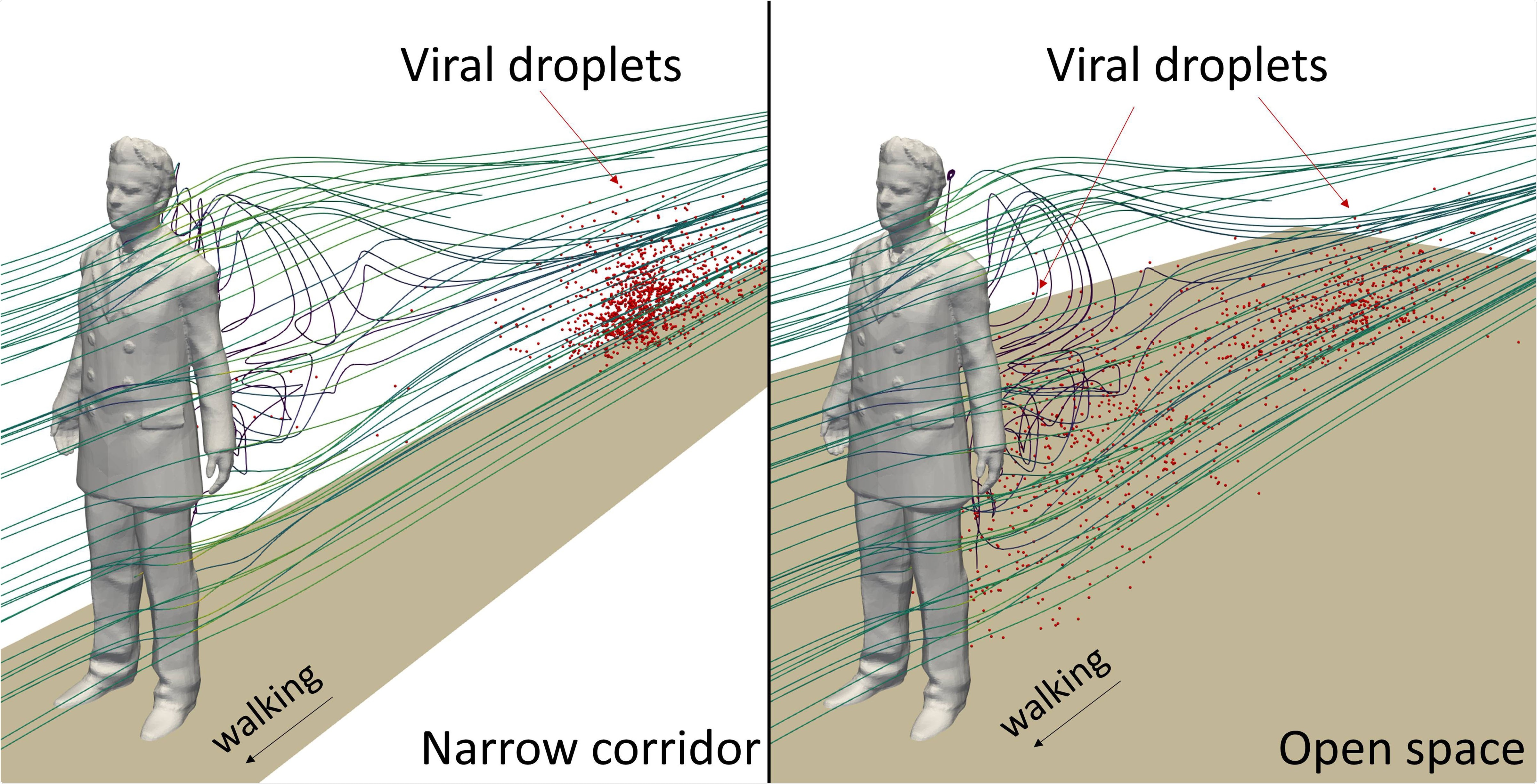New research has found that COVID-19 infected individuals breathe out water droplets laden with the virus that can form into long streams that trail behind them when walking through narrow corridors. These findings have significant implications on the guidelines in place to protect people from airborne transmission.

The cough-generated droplets from a walking individual disperse differently in a narrow corridor and an open space. Image Credit: Xiaolei Yang
Those infected with COVID-19 create a trail of infected droplets
A team of scientists at the Chinese Academy of Sciences have researched how droplets are dispersed in different environments to understand more about how COVID-19 is transmitted. While countries across the globe have enforced some kind of social distancing restrictions for most of the year, scientists continue to investigate how the virus is transmitted to control the pandemic, which is still seeing hundreds of thousands of new cases reported daily.
Published this month in the journal Physics of Fluids, from the American Institute of Physics, the paper published by the Chinese team reveals how they used computer simulations to predict patterns of airflow and droplet dispersal in different scenarios. The team concludes how the shape and size of the space influence these patterns.
The study’s findings highlight how walking quickly behind an infected adult in a narrow corridor is a scenario that increases the risk of transmission, particularly for children who are closer to the height of the trail of droplets as they fall through the air.
Narrow corridors particularly risky, especially for children
Previous researchers had developed the stimulation technique used in the current study to investigate how objects such as air conditioners, glass barriers, toilets, and windows, impact the airflow patterns and ultimately, how the virus is transmitted through the air. These earlier studies focused on airflow patterns in larger, open indoor spaces. Until now, airflow patterns in tighter spaces had not been studied concerning COVID-19 transmission.
The team, based in China, has found that when a person coughs while walking through a corridor, they introduce water droplets into the air that form a trail, traveling around the person’s body as water would move around a speeding boat.
The team referred to this pattern of water droplets as a “re-circulation bubble”, which then forms a trail that lingers behind them as they walk, following them at roughly waist height. This trail of droplets, if produced by someone infected with COVID-19, puts those walking behind the person at an increased risk of contracting the virus.
Further to this, the team found that “flow patterns we found are strongly related to the shape of the human body”, one of the paper’s authors, Xiaolei Yang, continued, “at 2 meters downstream, the wake is almost negligible at mouth height and leg height but is still visible at waist height.”
After determining the airflow patterns, the researchers were able to model the dispersal of the droplets, following them from their origin at the mouth. They found that the shape of the environment had a dramatic effect on droplet dispersal.
They concluded that the droplets dispersed in one of two modes. The first mode seeing the droplets move from the mouth to float steadily behind them, forming a bubble of droplets that hang far behind the person. The second mode involves the droplets attaching themself closely to the person’s back, floating behind them like a tail as they move.
for the detached mode, the droplet concentration is much higher than for the attached mode, five seconds after a cough, this poses a great challenge in determining a safe social distance in places like a very narrow corridor, where a person may inhale viral droplets even if the patient is far in front of him or her.”
Yang
The team concluded that children were at particular risk of this type of transmission, given that in both modes, the droplets move to what is around mouth level for children. The findings of this study will likely be invaluable to the development of more effective social distancing guidelines.
Journal reference:
- Zhaobin Li, Hongping Wang, Xinlei Zhang, Ting Wu, Xiaolei Yang. Effects of space sizes on the dispersion of cough-generated droplets from a walking person. Physics of Fluids, 2020; 32 (12): 121705 DOI: 10.1063/5.0034874